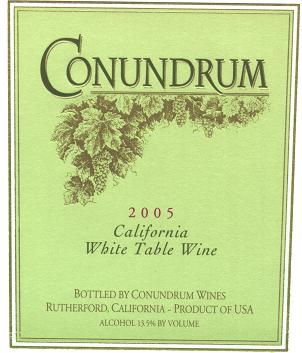 |
|
Wine Details
Price:
Description:
Conundrum is truly a California wine, including grapes from the Napa, Monterey, Santa Barbara and Tulare counties. For the 2005 vintage, grapes were brought in over a two and a-half month period beginning August 30th - a couple weeks later than normal. Sauvignon Blanc was first, coming from eight different Napa Valley vineyards, where the warm weather can bring out this grape’s green-melon-like character at one vineyard site and its fresh-cut-grass character at another site. The next grape variety to ripen was Muscat Canelli, from warm Tulare County. Muscat is the grape that gives Conundrum its high-toned, floral aroma, along with some equally floral, cool-climate Viognier we grew in Monterey County. We also grew most of our Chardonnay and other varietals in Monterey County, one of the coolest, driest growing regions in California. The long season there—we harvested Chardonnay through November 19—allows the grapes to develop deeply ripe flavors and golden color while retaining great natural acidity.
|
|
|